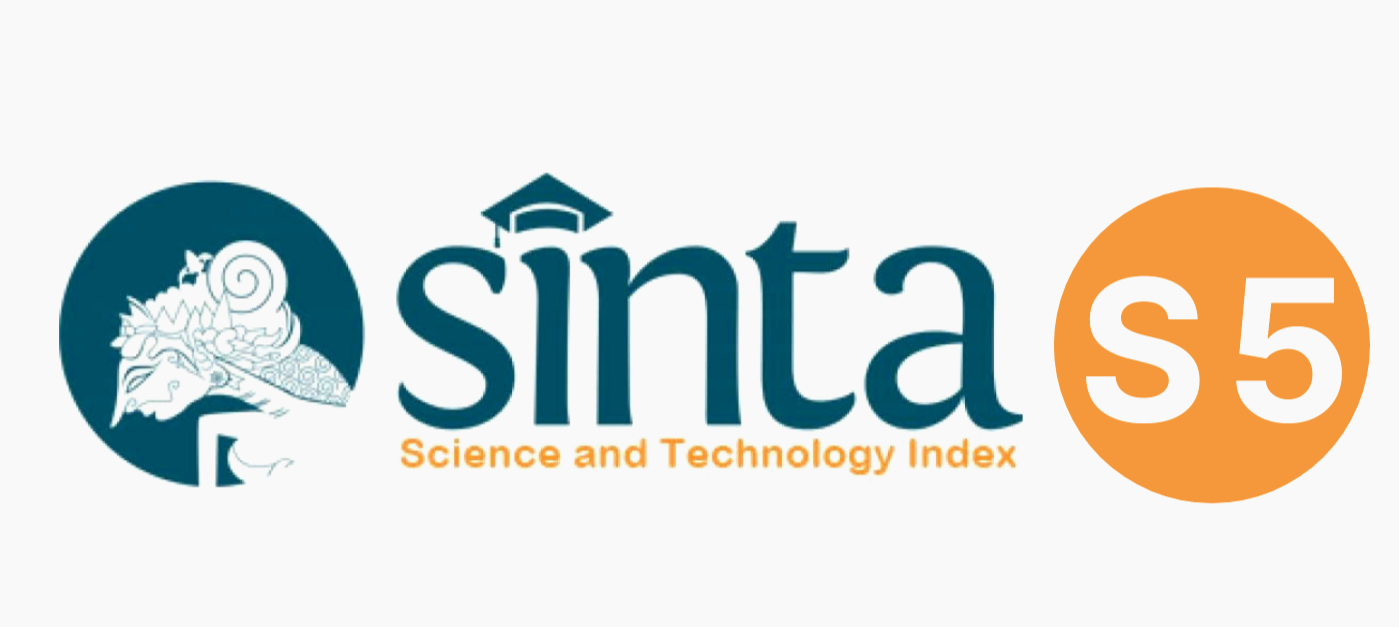Online Submission and Author Guideline
Steps For Online Submission
After having username/password for logging in into Politicos: Jurnal Politik Dan Pemerintahan, the author will be brought into online author submission interface where the author should click “new submission†or click “click here†in the start new submission section.
Step 1 – Starting The Submission: The author should check-mark the journal check list and it should be appropriate with the article’s content. The author can give comment to the editor in the comments for editor section.
Step 2 – Uploading The Submission: To upload the manuscript into the journal, click browse/choose file on the upload submission file and choose the manuscript document file (.doc/.docx) to be submitted, then click “upload†button until the file has been uploaded.
Step 3 – Entering Submission’s Metadata: In this step, detail authors metadata should be entered including marked corresponding author. After that, manuscript title and abstract must be uploaded by copying the text and paste in the textbox including keywords.
Step 4 – Uploading Supplementary Files: Supplementary file should be uploaded. Therefore, click on Browse button, choose the files, and then click on Upload button. If there is no supplementary files to be uploaded just click “save and continue†button.
Step – 5 Confirming The Submission: Author should final check the uploaded manuscript documents in this step. To submit the manuscript to Politicos: Jurnal Politik Dan Pemerintahan, click Finish Submission button after the documents are true. The corresponding author or the principal contact will receive an acknowledgment by email and will be able to view the submission’s progress through the editorial process by logging in to the journal web address site.
After this submission, Authors who submit the manuscript will get a confirmation email about the submission. Therefore, Authors are able to track their submission status at any time by logging in to the online submission interface. The submission tracking includes a status of manuscript review and editorial process.
Author Guideline
General Author Guideline
All manuscripts must be submitted to Politicos: Jurnal Politik Dan Pemerintahan Editorial Office by Online Submission at E-Journal portal address:
(https://www.ejournal.warmadewa.ac.id/index.php/politicos/about/submissions),
Where author register as Author and/or offered as Reviewer by online. If authors have any problems on the online submission, please contact Editorial Office at the following email:
bayuadhinata@warmadewa.ac.id
Department of Government, Faculty of Social and Political Sciences, Universitas Warmadewa
Jl. Terompong no. 24 Tanjung Bungkak, Denpasar Bali, Indonesia.
Manuscript written in English but the abstract must be in English and Indonesian. The manuscript must be at least 5000-7000 words. The manuscript should be written based on the Politicos: Jurnal Politik Dan Pemerintahan Template.
Manuscript Template
Manuscript should be prepared according to the following author guidelines
Reviewing Manuscript
Every submitted paper is independently reviewed by reviewer. The decision for publication, amendment, or rejection is based upon their reports/recommendation. If the reviewer consider a manuscript unsuitable for publication in this journal, a statement explaining the basis for the decision will be sent to the authors within three months of the submission date.
Revision Manuscript
Manuscripts sent back to the author for revision should be returned to the editor without delay. Revised manuscripts can be sent to editorial office through the Online Submission Interface. The revised manuscripts returned later than three months will be considered as new submissions.
Manuscript Preparation Guideline
All manuscript submitted into Politicos: Jurnal Politik Dan Pemerintahan is checked and decided by the Editor. The manuscript which is not appropriate with the Politicos: Jurnal Politik Dan Pemerintahan format will be rejected. The manuscript which is appropriate with Politicos: Jurnal Politik Dan Pemerintahan format will be accepted and confirmed through email by Editor.
Manuscript Format
The manuscript which is submitted into Politicos: Jurnal Politik Dan Pemerintahan typed using Microsoft Word program on A4 size, around 5,000-7,000 words with format:
-
- INTRODUCTION
- METHOD
- RESULTS
- DISCUSSION
- CONCLUSION
- REFERENCES
Manuscript Title
-
- 14pt, Gadugi
- Left
Author Detail
-
- Name (10 pt Gadugi, Left, Capital Each Words)
- Affiliation (9 Gadugi, Left)
Abstract and Keywords
The abstract should state the problem question or objectives under investigation. The abstract should be concise and truthful. Indicate the study design, including types of participants or data sources, analytic strategy, main results, findings, and main implications or significance. Abstract kindly adhere to the specified word range of 200-250 words. Keywords serve as labels for your manuscript and play a crucial role in editing, indexing, and searching. Consequently, it is important that the keywords accurately depict the content and emphasize the main points of your post. Utilize exclusively abbreviations that are firmly established within the specific field, adhering to a font size of 9 points, single-line spacing, and a single-paragraph format.
-
- Heading (9 pt Gadugi, Bold, Align Left)
- Body (9 pt Gadugi, justify, spacing 1.0pt)
- Keyword (9 pt Gadugi, Bold, Align Left)
Introduction (Gadugi, 11 pt)
The introduction should concisely frame the problem or question and its context. The author should review, critique, and synthesize the applicable literature or identify key issues, debates, and theoretical frameworks in the relevant literature to clarify barriers, knowledge gaps, or practical needs. In this section, the author should state the purposes, goals, and aims of the study. State the target audience and provide the rationale for the fit or design used to investigate this study or research goal (e.g., theory building, explanatory, developing understanding, social action). Describe the approach to inquiry if it illuminates the objectives and research rationale (e.g., descriptive, interpretive, feminist, psychoanalytic, postpositivist, critical, postmodern, constructivist, or pragmatic approaches). If relevant to objectives, explain the relation of the current analysis to prior articles or publications. The author must explain clearly and define its aim after the introduction to demonstrate the novelty of the scientific paper. The article draft should have a word count ranging from 5000 to 7000, excluding the references. (Gadugi; 10 pt, single space).
-
- Heading/1.INTRODUCTION, (11 pt Gadugi, Align Left)
- Body (10 pt Gadugi, justify, single spacing 1.pt)
Method (11 pt)
Summarize the research design, including data-collection strategies, data-analytic strategies, and, if illuminating, approaches to inquiry (e.g., descriptive, interpretive, feminist, psychoanalytic, postpositivist, critical, postmodern, constructivist, or pragmatic approaches). The author should provide the rationale for the design selected. Provide the numbers of participants, informants, documents, and events analyzed. Also describe the demographics or cultural information, perspectives of participants, or characteristics of data sources that might influence the data collected. The author needs to describe the recruitment of participants or informants and describe the process by which the number of participants or informants was determined concerning the study design. Describe the participants or informants’ selection process (e.g., purposive sampling methods, theoretical sampling; diversity sampling) and inclusion or exclusion criteria. Provide the general context for the study such as when data were collected and sites of data collection. State the form of data collected (e.g., interviews, media, observation). In the data-analytic, describe the methods and procedures used and for what purposes. Explicate in detail the analysis process, including some discussion of the procedures (e.g., coding, thematic analysis) following a principle of transparency. Provide rationales to illuminate analytic choices concerning the study goals. (Gadugi; 10 pt, single space).
-
- Heading/2.METHOD, (11 pt Gadugi, Align Left)
- Body (10 pt Gadugi, justify, single spacing pt)
Results (11 pt)
This section encompasses the findings of the investigation. The author should describe research findings (e.g., themes, categories, narratives) and the meaning and understandings that the researcher has derived from the data analysis. Demonstrate the analytic process of reaching findings (e.g., quotes, excerpts of data) and present research findings in a way that is compatible with the study design. Present synthesizing illustrations (e.g., diagrams, tables, models), if useful in organizing and conveying findings. Photographs can be used. Findings also presented artistically should include information in the reporting standards to support the research presentation. Use quotes or excerpts to augment data description (e.g., thick, evocative description, field notes, text excerpts), but these should not replace the description of the findings of the analysis. (Gadugi; 10 pt, single space).
-
- Heading/3.RESULTS, (11 pt Gadugi, Align Left)
- Body (10 pt Gadugi, justify, single spacing 1pt)
Discussion (11 pt)
This section should describe the central contributions and their significance in advancing disciplinary understandings. Describe the types of contributions made by findings (e.g., challenging, elaborating on, and supporting prior research or theory in the literature describing the relevance) and how findings can be best utilized. Identify similarities and differences from prior theories and research findings. Reflect on any alternative explanations of the findings. Identify the study’s strengths and limitations (e.g., consider how the data's quality, source, or types or the analytic processes might support or weaken its methodological integrity). Describe the limits of the scope of transferability (e.g., what should readers bear in mind when using findings across contexts). Revisit any ethical dilemmas or challenges that were encountered and provide related suggestions for future researchers. Consider the implications for future research, policy, or practice. (Gadugi; 10 pt, single space).
-
- Heading/3.DISCUSSION, (11 pt Gadugi, Align Left)
- Body (10 pt Gadugi, justify, single spacing 1pt)
Conclusion
The concluding statement should contain a summary and suggestions. The summary should exemplify the answers provided to the research objectives or acquired findings. The summary should not contain a repetition of research results and discussion, and it should instead contain a summation of research results and findings as expected in the research objective. The suggestions should present matters that will subsequently be conducted concerning the research’s ensuing concepts. (Gadugi; 10 pt, single space).
-
- Heading/4.CONCLUSION, (11 pt Gadugi, Align Left)
- Body (10 pt Gadugi, justify, single spacing 1pt)
Reference
-
- Use APA (American Psychological Association) 7th Style for of the reference.
- 10 pt Gadugi, spacing 1.0, Hanging 1cm
- Example:
- For Journal: Last Name, First Name Initial, and Middle Name Initial. (Year). Title of Article. Name of Journal, (Volume) Number, Pages. Doi/link
- For Book: Last Name, First Name Initial, and Middle Name Initial. (Year). Name of Book. City: Publisher
- We Suggest to Used Reference Manager like Mendeley, Zotero, End Note, etc to facilitate you in citation







